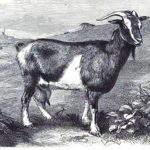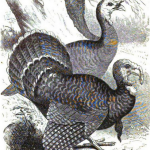November 8, 1996
I heard on the news recently that Russia’s president now has a heart with more bypasses than the Santa Monica Freeway. It’s not hard for me to be sympathetic because, if I lived in Russia now, I’d probably have heart trouble too. I remember fondly my own trip there a few years ago, when I thought I was going to the Soviet Union and ended up landing in Russia instead. I consider myself lucky that I was one of the last people to see Lenin, although probably not at his best. His skin looked like fiberglass and the fringe of hair around his head was turning green. I haven’t heard what’s become of his tomb now that he’s no longer residing in it, although I still think it would make an excellent nightclub. They could even concoct some fancy mixed drinks with names like The Opium of the People, The Stalin Stormtrooper, or maybe even The Soviet Union, made from fifteen liqueurs that don’t mix…After finding out the breakfast jelly was caviar (not the nicest surprise first thing in the morning), sampling Russian cognac (three parts turpentine one part grain alcohol, with some wood varnish for color), and being asked on every corner if I wanted to buy a furry hat, I was allowed to leave via Aeroflot. Aeroflot, the Russian airline, really lives up to its name. After taking our seats, the stewardess explained that there were no seatbelts, no flotation devices, and the plane was in serious danger of breaking apart when it scraped the treeline three hundred feet in front of the runway. At least, that’s my best guess, because it was all in Russian. The English part was a pre-recorded message that was mostly static with a little bit of what sounded like words. The captain then got on the intercom and said that, now that the Laugh At The Americans sign was on, the plane would be taking off. We took off, and went to a forty-five degree angle. The plane stayed at that angle for roughly half the flight. During the other half we were at a forty-five degree angle going down. The moral of this story? Travel broadens the mind. Make sure you take plenty of aspirin.
TEACHING MATH THROUGH THE DECADES
In 1950: A logger sells a truckload of lumber for $100. His cost of production is four-fifths of the price. What is his profit?
In 1960: A logger sells a truckload of lumber for $100. His cost of production is four-fifths of the price, or $80. What is his profit?
In 1970 (new math): A logger exchanges a set L of lumber for a set M of money. The cardinality of set M is 100, and each element is worth $1.00. Make 100 dots representing the elements of the set M. The set C of the costs of production contains 20 fewer points than set M. Represent the set C as a subset of M, and answer the following question: What is the cardinality of the set p of profits?
In 1980: A logger sells a truckload of lumber for $100. His cost of production is $80, and his profit is $20. Your assignment: underline the number 20.
In 1990: (outcome-based education): By cutting down beautiful forest trees, a logger makes $20. What do you think of this way of making a living? (Topic for class participation: How did the forest birds and squirrels feel?)
In 1996: By laying off 40% of its loggers, a company improves its stock price from $80 to $100. How much capital gain per share does the CEO make by exercising his stock options at $80? Assume capital gains are no longer taxed, because this encourages investment.






Facebook Comments